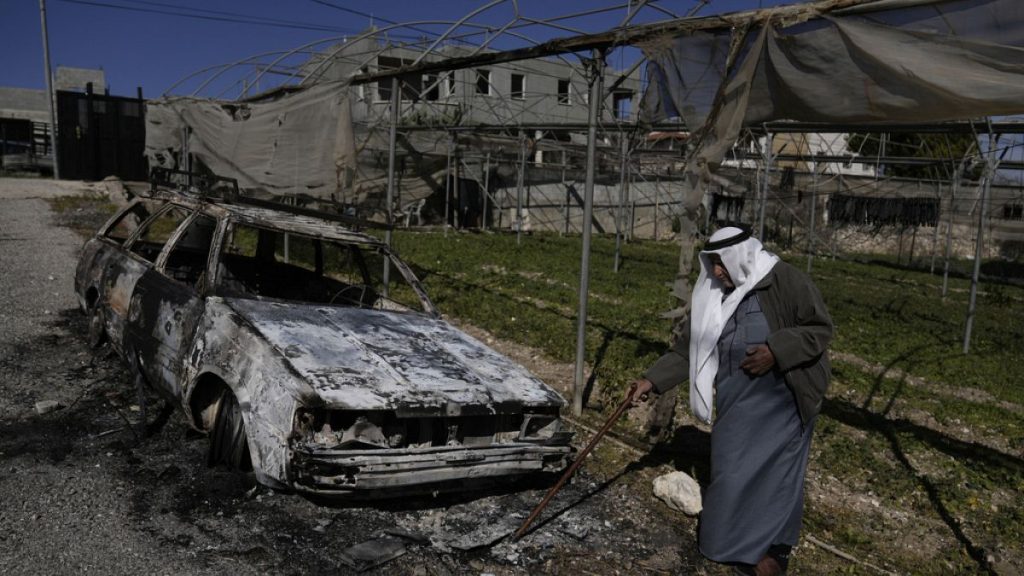The precarious ceasefire between Israel and Hamas, implemented on January 19th, ushered in a period of uneasy calm in the Gaza Strip, but simultaneously witnessed a surge in violence in the occupied West Bank. The focus shifted from the relentless bombardment of Gaza to the Jenin refugee camp, where an Israeli military strike claimed the lives of six Palestinians and left dozens wounded. This operation, described by the Israeli military as a “counterterrorism effort,” underscores the volatile nature of the region and the ongoing tensions that continue to simmer even as the guns fall silent in Gaza. The identities of the casualties in Jenin remain unclear, adding further complexity to an already fraught situation. Jenin, a known hub of militant activity, has become a recurring target of Israeli raids, particularly since the escalation of violence 15 months prior. The West Bank, under Israeli occupation, has experienced a dramatic increase in violence throughout the Gaza conflict, with over 800 Palestinian fatalities reported as a result of Israeli operations since Hamas’ initial attacks in October 2023. This incident in Jenin serves as a grim reminder of the pervasive insecurity and the ongoing cycle of violence that plagues the region. The Palestinian Authority, which governs parts of the West Bank, has also conducted raids in Jenin, seemingly in an attempt to solidify its authority in the post-conflict environment.
While the guns fell silent in Gaza, the devastation wrought by the conflict became starkly apparent as residents returned to their homes. The scene that greeted them was one of utter ruin. Homes had been reduced to rubble, belongings buried beneath the debris, and entire neighborhoods transformed into landscapes of destruction. The scale of the damage is immense, leaving families to grapple with the daunting task of rebuilding their lives amidst the wreckage. The influx of aid, with 915 trucks entering Gaza on the second day of the ceasefire, provided a lifeline of essential supplies to the beleaguered population. However, the material aid can only address the immediate needs, and the long-term recovery will require sustained international support and a commitment to addressing the root causes of the conflict.
In the Tal al-Zaatar neighborhood of northern Gaza, the devastation is particularly acute. Residents returning to their homes, often on foot due to the lack of transportation, found their lives irrevocably altered. Stories of complete destruction, of homes built over decades reduced to piles of bricks and concrete, paint a harrowing picture of loss and displacement. The emotional trauma is profound, with residents expressing feelings of suffocation, despair, and an overwhelming sense of uncertainty about the future. The task of clearing the debris, rebuilding homes, and reclaiming a sense of normalcy seems insurmountable for many, highlighting the deep psychological wounds inflicted by the conflict.
The fragility of the ceasefire looms large, and the future remains uncertain. US President Donald Trump’s comments on the situation reflect this uncertainty. While acknowledging the apparent weakening of Hamas, he expressed doubts about the durability of the truce and distanced the US from the conflict, characterizing it as “their war.” He also hinted at the possibility of American assistance in rebuilding Gaza, describing the territory as a “massive demolition site” with redevelopment potential. Trump’s remarks, while suggesting a possible role for the US in the reconstruction efforts, also underscore the complex political landscape and the challenges in achieving a lasting peace.
The residents of Tal al-Zaatar, and indeed all Gazans, face a long and arduous road to recovery. The immediate focus is on survival – securing shelter, food, and basic necessities. The task of rebuilding will require immense resources, both material and emotional. The international community has a crucial role to play in supporting this recovery, providing not only aid but also diplomatic efforts to ensure a stable and lasting peace. The fragile ceasefire offers a window of opportunity, but the underlying issues that fuel the conflict remain unresolved.
As Gazans begin the arduous process of sifting through the wreckage and rebuilding their lives, the international community watches with bated breath. The hope is that the ceasefire will hold, allowing for the delivery of humanitarian aid and the commencement of the long and challenging process of reconstruction. However, the underlying tensions remain, and the future of Gaza, and the region as a whole, hangs precariously in the balance. The fragile peace offers a glimmer of hope, but the path towards a lasting resolution remains fraught with challenges. The international community must seize this opportunity to address the root causes of the conflict and work towards a future where peace and security prevail.














